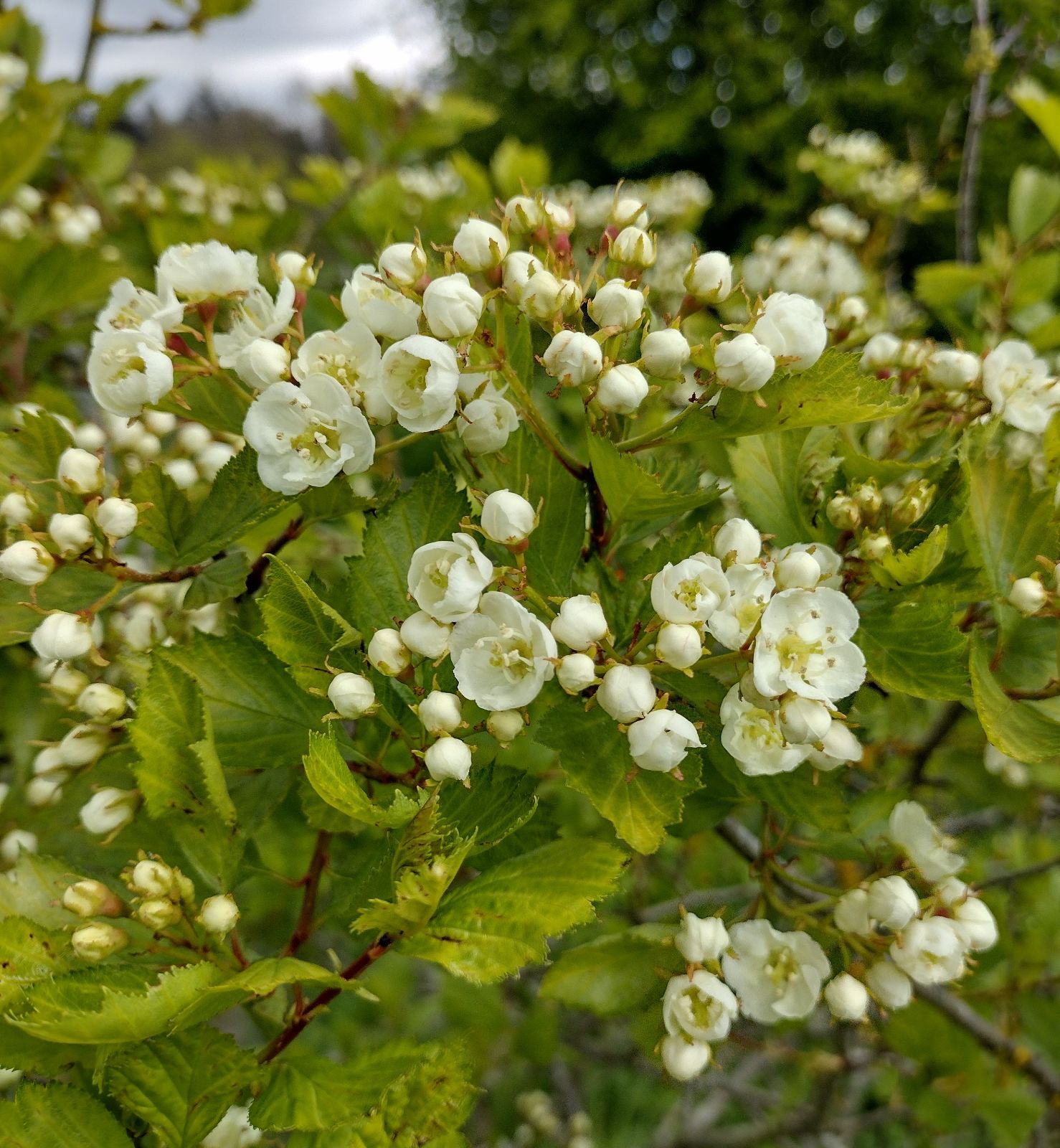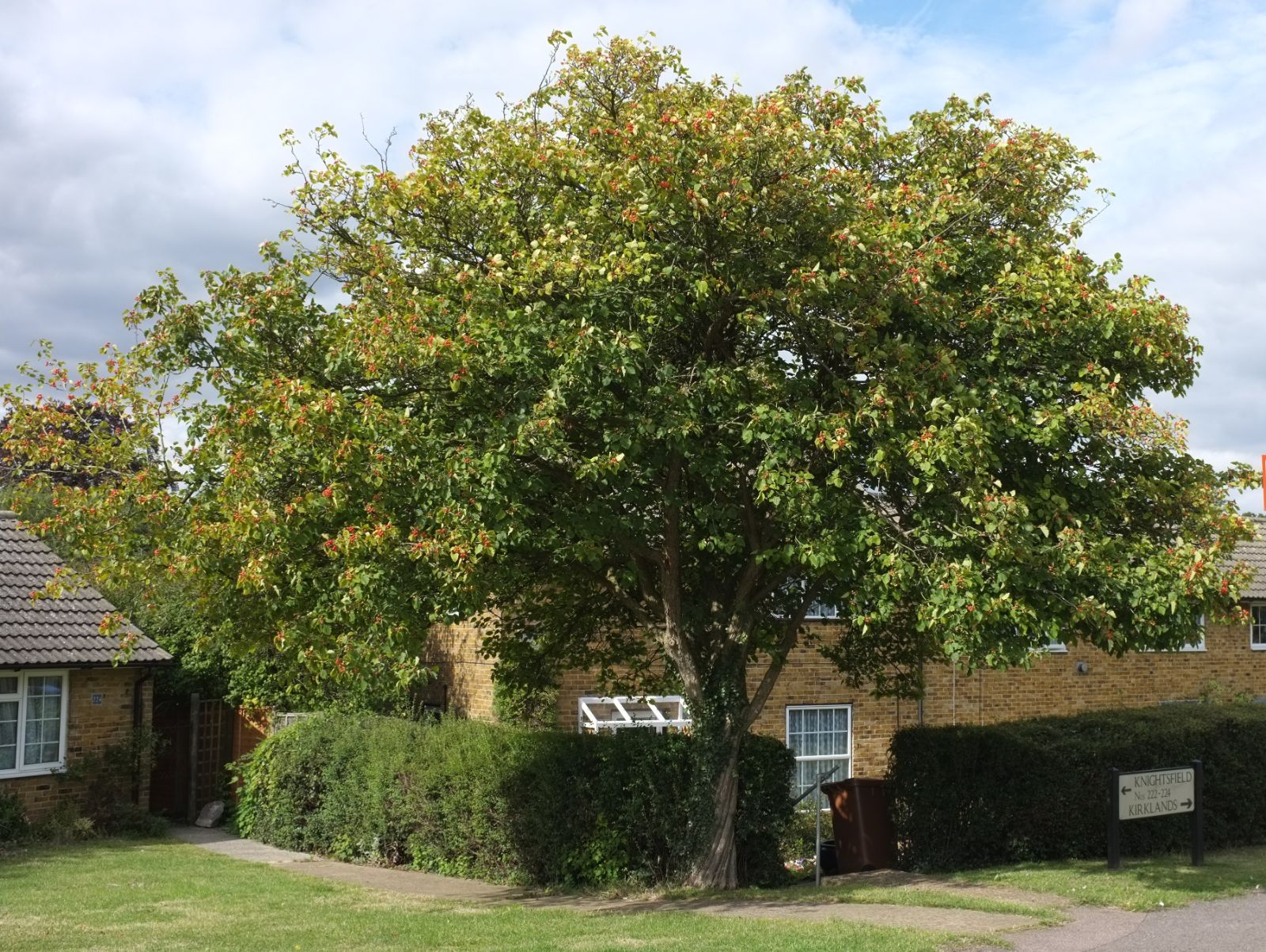Crataegus chrysocarpa
Sponsor
Kindly sponsored by
This genus has been sponsored and new text is being prepared.
Credits
Article from Bean's Trees and Shrubs Hardy in the British Isles
Recommended citation
'Crataegus chrysocarpa' from the website Trees and Shrubs Online (treesandshrubsonline.
Genus
Infraspecifics
Other taxa in genus
- Crataegus ambigua
- Crataegus apiifolia
- Crataegus aprica
- Crataegus azarolus
- Crataegus baroussana
- Crataegus brachyacantha
- Crataegus chlorosarca
- Crataegus chungtienensis
- Crataegus coccinioides
- Crataegus crus-galli
- Crataegus cuneata
- Crataegus × dippeliana
- Crataegus douglasii
- Crataegus dsungarica
- Crataegus durobrivensis
- Crataegus flabellata
- Crataegus flava
- Crataegus henryi
- Crataegus heterophylla
- Crataegus intricata
- Crataegus jozana
- Crataegus laevigata
- Crataegus × lavallei
- Crataegus macracantha
- Crataegus marshallii
- Crataegus mexicana
- Crataegus meyeri
- Crataegus mollis
- Crataegus monogyna
- Crataegus nigra
- Crataegus oliveriana
- Crataegus orientalis
- Crataegus oxyacantha
- Crataegus pedicellata
- Crataegus pentagyna
- Crataegus phaenopyrum
- Crataegus pinnatifida
- Crataegus pruinosa
- Crataegus prunifolia
- Crataegus pseudoheterophylla
- Crataegus punctata
- Crataegus sanguinea
- Crataegus spathulata
- Crataegus stipulacea
- Crataegus succulenta
- Crataegus tanacetifolia
- Crataegus tomentosa
- Crataegus uniflora
- Crataegus viridis
- Crataegus wattiana
- Crataegus wilsonii
A tree up to 20 ft high, with a wide-spreading head; young shoots at first more or less covered with loose white hairs which soon fall away, leaving them glabrous, shining brown; thorns up to 2 in. long. Leaves oval, diamond-shaped, or obovate; always wedge-shaped at the base, pointed at the apex, the upper half shallowly lobed, finely toothed, the teeth gland-tipped; 1 to 3 in. long, 3⁄4 to 2 in. wide; at first downy above, becoming glabrous and glossy; hairy on the midrib and chief veins beneath; stalk 1⁄2 to 1 in. long. Flowers white, 1⁄2 to 3⁄4 in. diameter, borne during May in corymbs 2 to 3 in. across; flower-stalks and calyx more or less shaggy with whitish hairs; stamens ten, anthers yellow; styles three or four. Fruit pendulous, red, rarely yellow, globose but rather flattened at the top, 1⁄2 in. or less in diameter.
C dunbarii Sarg
A small shrubby tree to 15 ft high, with a dense, rounded crown. Leaves oval to ovate, shallowly lobed, hairy above when young, becoming dark glossy green. Flowers with ten stamens, anthers red, sepals edged with glandular teeth. Fruit with a thin flesh and three to four nutlets with cavities on the inner surface. Discovered by John Dunbar on the Genesee River, near Rochester, New York.C jackii Sarg
A small shrubby tree to about 10 ft high, confined to parts of Quebec province. Leaves oval to broadly ovate, sharply toothed, with shallow, indistinct lobes, truncate to broadly wedge-shaped at the base, 1 to 1{1/2} in. long. Flowers with five to ten stamens and yellow anthers. Fruit dull red, juicy, broadly oblong to slightly egg-shaped, about {1/2} in. long, with two to three nutlets. Native of southern Quebec.C jonesiae Sarg
A tree to about 20 ft high, branchlets downy when young, becoming glossy orange-brown and armed with spines 2 to 3 in. long. Leaves broadly oval to obovate, up to 4 in. long, wedge-shaped at the base, sharply toothed and indented above the middle with pointed lobes; dark, glossy green above, downy beneath at least when young. Flowers up to 1 in. across; stamens ten with large rose-coloured anthers. Fruit bright red and juicy, {3/5} in. long, with two or three nutlets. Native of E. Canada and northern New England.The following species, placed by Palmer in the series Brainerdianeae, may also be mentioned here:var. phoenicea Palmer
Synonyms
C. rotundifolia Moench, not Lam.
C. coccinea var. rotundifolia (Moench) Sarg


